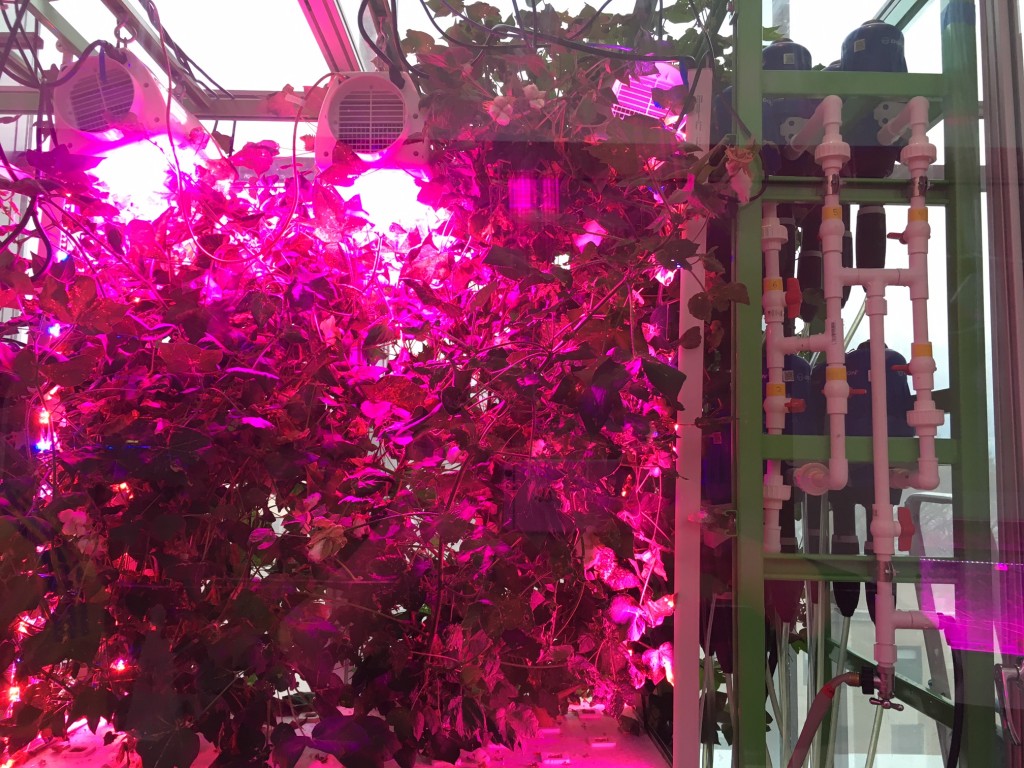Stressing out your plants can make them more delicious, and using the controllable environments at the MIT Open Agriculture Initiative, I’m going to measure how, to take this idea from concept to knowledge tool.

My training is in flavor chemistry, and most of flavor comes from aroma, which comes from volatile molecules. It’s easy as a lab scientist to only think about the one part of a bigger picture your expertise makes you really good at analyzing—but if we really care about flavor our understanding can only be enriched by considering all the systems, ideas, and knowledge that intersect with and make up flavor. (For a lot more on that, see
this talk). Thus, the subject of this experiment: the connection between plant metabolism, the environment, and flavor. As one so often is, this project draws inspiration from the indomitable Harold McGee—for a much more cogent take on plant flavor, see
his lecture from the very first MAD, Planting Thoughts.In the evolutionary history of plants, shifts in their environment led to shifts in chemistry—a molecular production ramp-up of secondary metabolites to serve specific roles for the plant. When algae evolved into land plans, they evolved molecules to protect from the new stresses of UV light and desiccation. When herbivorous insects came along, plants evolved small molecules to deter or poison them. Fortunately for us humans, many of these stress-related plant molecules have a totally different bio-activity for us: we perceive them as flavors!A lot of the metabolism of plants is “baked-in” by their genes (and one problem with many modern food plants is that they’ve had flavor and nutrition literally bred out of them in the pursuit of ever-greater yield and uniformity). But for any set genome, there’s a kaleidoscope of phenomic possibilities that can be expressed, many of them in response to environment. This part of the reason why, for example, pinot noir from Napa tastes different from pinot noir from Burgundy. If we can create the right environmental stresses at the right time, can we make more intense-tasting plants?Right now I’m working with the Open Ag Initiative at the MIT Media Lab—they are building open hardware, software, and data platforms to put controllable growing environments in the hands of farmers, students, restaurants, you name it—in the spirit of mutual inspiration.
We’re going to look at basil as a (tasty) model organism—like many herbs, it produces a lot of flavor molecules, and a lot of these are environment- and stress-related. We’ve built some isolated rooms inside the Food Server at the MIT Media Lab (if you stop by, there are observation windows if you want to peek in) and we’re going to change things for the basil plants, then measure changes in their composition of volatile molecules using GC-MS. We’re looking at UV light, which has been shown to enhance the production of the trichomes on basil leaves that hold volatiles; drought stress, which has been shown to increase volatile production overall; root and soil microbes, which can do things like raise the expression of eugenol, a clove-smelling molecule, by an order of magnitude (for 10X clove basil); and treatment with a substance called chitosan, which is chemically similar to the chitin found in the exoskeletons of insects, and increases volatile production by tricking the basil into believing that it’s the target of an insect attack.
What’s going to work the best? Which basil will be the most delicious? Can we create a climate recipe that mimics the growing conditions in Genoa, or makes a totally postmodern basil? Where can we go from basil? It’s all open source all the time at Open Ag, so stay tuned!
Keep an eye
here for more thoughts on science, food, and flavor.





